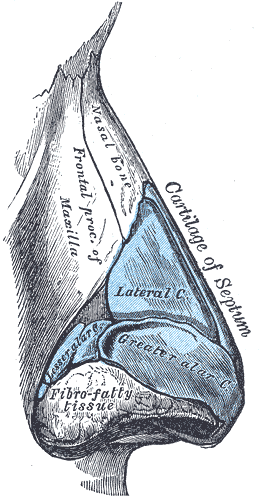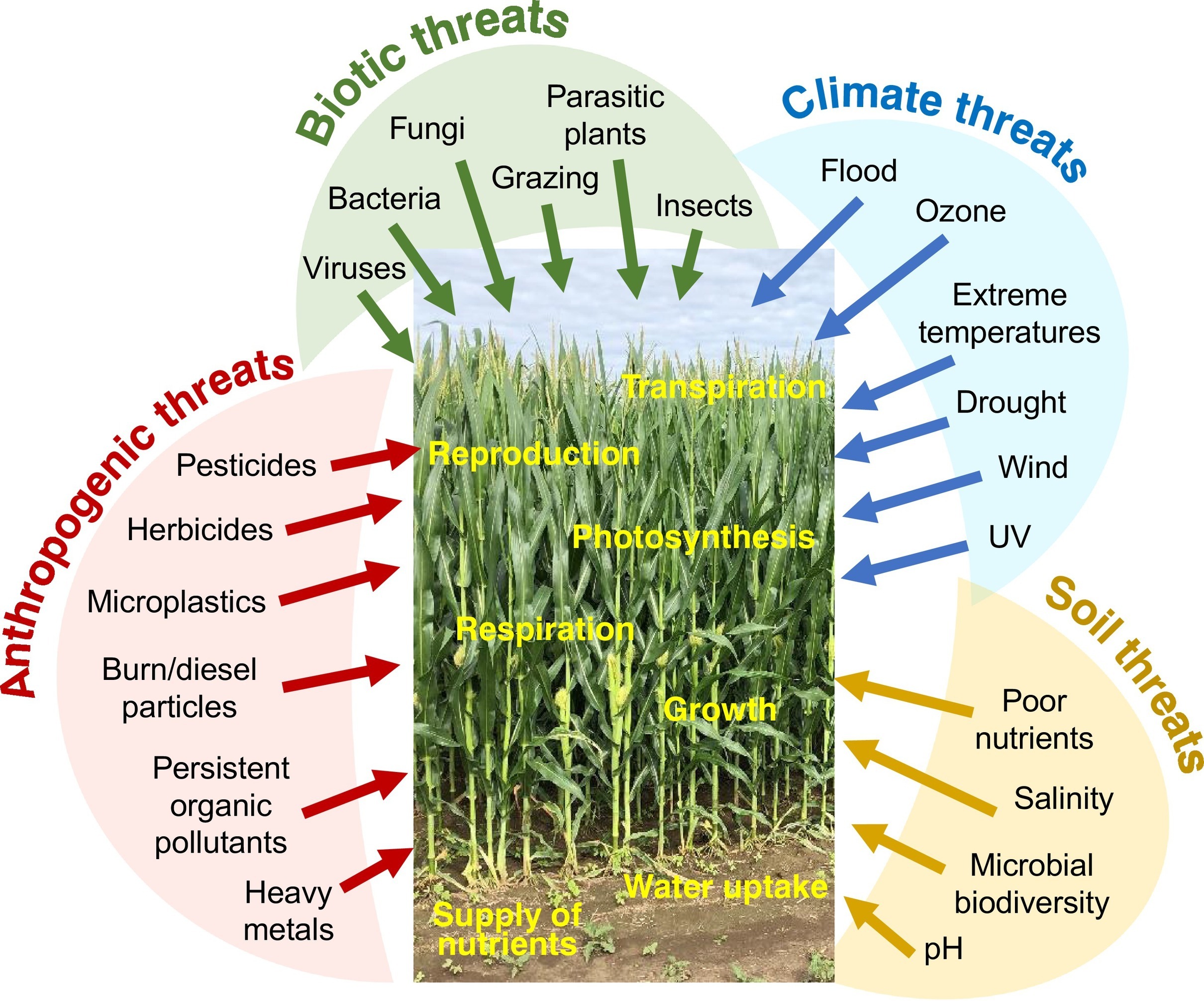|
Nasal Bridge
The nasal bridge is the upper part of the nose, where the nasal bones and surrounding soft tissues provide structural support. While commonly discussed in human anatomy, nasal bridges exist in various forms across many vertebrates, particularly mammals. The shape, size, and function of the nasal bridge are influenced by evolutionary adaptations, playing a key role in Respiration (physiology), respiration, sense of smell, and thermoregulation. Anatomy Humans In humans, the nasal bridge is the elevated region of the human nose, nose between the eyes. It is primarily formed by the two small, oblong nasal bones, which meet at the midline to form the internasal suture. The nasal bridge extends from the nasal root, where the nose meets the forehead, to the lower edge of the nasal bones. Laterally, it reaches the inner canthi, the medial corners of the eyes, creating a saddle-shaped contour across the upper nose. The height and shape of the nasal bridge vary among individuals and ... [...More Info...] [...Related Items...] OR: [Wikipedia] [Google] [Baidu] |
Saddle
A saddle is a supportive structure for a rider of an animal, fastened to an animal's back by a girth. The most common type is equestrian. However, specialized saddles have been created for oxen, camels and other animals. It is not known precisely when riders first began to use some sort of padding or protection, but a blanket attached by some form of surcingle or girth was probably the first "saddle", followed later by more elaborate padded designs. The solid saddle tree was a later invention, and though early stirrup designs predated the invention of the solid tree, the paired stirrup, which attached to the tree, was the last element of the saddle to reach the basic form that is still used today. Present-day saddles come in a wide variety of styles, each designed for a specific equestrianism discipline, and require careful fit to both the rider and the horse. Proper saddle care can extend the useful life of a saddle, often for decades. The saddle was a crucial step in ... [...More Info...] [...Related Items...] OR: [Wikipedia] [Google] [Baidu] |
Botulinum Toxin
Botulinum toxin, or botulinum neurotoxin (commonly called botox), is a neurotoxic protein produced by the bacterium ''Clostridium botulinum'' and related species. It prevents the release of the neurotransmitter acetylcholine from axon endings at the neuromuscular junction, thus causing flaccid paralysis. The toxin causes the disease botulism. The toxin is also used commercially for medical and cosmetic purposes. Botulinum toxin is an acetylcholine release inhibitor and a neuromuscular blocking agent. The seven main types of botulinum toxin are named types A to G (A, B, C1, C2, D, E, F and G). New types are occasionally found. Types A and B are capable of causing disease in humans, and are also used commercially and medically. Types C–G are less common; types E and F can cause disease in humans, while the other types cause disease in other animals. Botulinum toxins are among the most potent toxins known to science. Intoxication can occur naturally as a result of eithe ... [...More Info...] [...Related Items...] OR: [Wikipedia] [Google] [Baidu] |
Facial Rejuvenation
Facial rejuvenation is a cosmetic treatment (or series of cosmetic treatments), which aims to restore a youthful appearance to the human face. Facial rejuvenation can be achieved through either surgical and/or non-surgical options. Procedures can vary in invasiveness and depth of treatment. Surgical procedures can restore facial symmetry through targeted procedures and facial restructuring and skin alterations. Non-surgical procedures can target specific depths of facial structures and treat localized facial concerns such as wrinkles, skin laxity, hyperpigmentation and scars. Surgical (invasive) facial rejuvenation procedures can include a brow lift (forehead lift), eye lift (blepharoplasty), facelift (rhytidectomy), chin lift and neck lift. Non-surgical (non-invasive) facial rejuvenation treatments can include chemical peels, neuromodulator (such as botox), Injectable filler, dermal fillers, laser resurfacing, photorejuvenation, radiofrequency, and Ultrasound, ultrasound. Visual a ... [...More Info...] [...Related Items...] OR: [Wikipedia] [Google] [Baidu] |
Attentional Control
Attentional control, commonly referred to as concentration, refers to an individual's capacity to choose what they pay attention to and what they ignore. It is also known as endogeny, endogenous attention or executive functions, executive attention. In lay terms, attentional control can be described as an individual's ability to concentrate. Primarily mediated by the frontal lobes, frontal areas of the brain including the anterior cingulate cortex, attentional control and attentional shifting are thought to be closely related to other executive functions such as working memory. General overview of research Sources of attention in the brain create a system of three networks: alertness (maintaining awareness), orientation (information from sensory input), and executive control (resolving conflict). These three networks have been studied using experimental designs involving adults, children, and monkeys, with and without abnormalities of attention. Research designs include the Stroop ... [...More Info...] [...Related Items...] OR: [Wikipedia] [Google] [Baidu] |
Frown
A frown (also known as a scowl) is a facial expression in which the eyebrows are brought together, and the forehead is wrinkled, usually indicating displeasure, sadness or worry, or less often confusion or concentration. The appearance of a frown varies by culture. An alternative usage in North America is thought of as an expression of the mouth. In those cases when used iconically, as with an emoticon, it is entirely presented by the curve of the lips forming a down-open curve. The mouth expression is also commonly referred to in the colloquial English phrase, especially in the United States, to "turn that frown upside down" which indicates changing from sad to happy. Description Charles Darwin described the primary act of frowning as the furrowing of the brow which leads to a rise in the upper lip and a down-turning of the corners of the mouth. While the appearance of a frown varies from culture to culture, there appears to be some degree of universality to the recognition of ... [...More Info...] [...Related Items...] OR: [Wikipedia] [Google] [Baidu] |
Facial Expression
Facial expression is the motion and positioning of the muscles beneath the skin of the face. These movements convey the emotional state of an individual to observers and are a form of nonverbal communication. They are a primary means of conveying social information between humans, but they also occur in most other mammals and some other animal species. Humans can adopt a facial expression voluntarily or involuntarily, and the neural mechanisms responsible for controlling the expression differ in each case. Voluntary facial expressions are often socially conditioned and follow a cortical route in the brain. Conversely, involuntary facial expressions are believed to be innate and follow a subcortical route in the brain. Facial recognition can be an emotional experience for the brain and the amygdala is highly involved in the recognition process. Beyond the accessory nature of facial expressions in spoken communication between people, they play a significant role in communication ... [...More Info...] [...Related Items...] OR: [Wikipedia] [Google] [Baidu] |
Glabella
The glabella, in humans, is the area of skin between the eyebrows and above the nose. The term also refers to the underlying bone that is slightly depressed, and joins the two brow ridges. It is a cephalometric landmark that is just superior to the nasion. Etymology The term for the area is derived from the Latin Latin ( or ) is a classical language belonging to the Italic languages, Italic branch of the Indo-European languages. Latin was originally spoken by the Latins (Italic tribe), Latins in Latium (now known as Lazio), the lower Tiber area aroun ... , "smooth", feminine of ''glabellus'', "hairless". Function The glabella is a key anatomical landmark used in craniofacial measurements, including interglabellar distance, which helps assess facial proportions in aesthetics and surgery. It also contributes to facial expressions through the action of muscles like the frontalis and orbicularis oculi. In medical science The skin of the glabella may be used to measure ... [...More Info...] [...Related Items...] OR: [Wikipedia] [Google] [Baidu] |
Procerus Muscle
The procerus muscle (or pyramidalis nasi) is a small pyramidal muscle in the glabella. It is involved in facial expressions such as frowning and those associated with attentional control, and it indirectly helps shield the eyes from bright light. Because it contributes to wrinkle formation on the nasal bridge, it is often targeted in non-surgical facial rejuvenation treatments, such as botulinum toxin injections. ''Procerus'' is Latin, meaning tall or extended. Structure The procerus muscle arises by tendinous fibers from the fascia covering the lower part of the nasal bone and upper part of the lateral nasal cartilage. It is inserted into the skin over the lower part of the forehead between the two eyebrows on either side of the midline, its fibers merging with those of the frontalis muscle. Nerve supply The procerus muscle is supplied by the temporal branch of the facial nerve (VII). It may also be supplied by other branches of the facial nerve, which can be varied, i ... [...More Info...] [...Related Items...] OR: [Wikipedia] [Google] [Baidu] |
Polygenic Trait
Quantitative genetics is the study of quantitative traits, which are phenotypes that vary continuously—such as height or mass—as opposed to phenotypes and gene-products that are discretely identifiable—such as eye-colour, or the presence of a particular biochemical. Both of these branches of genetics use the frequencies of different alleles of a gene in breeding populations (gamodemes), and combine them with concepts from simple Mendelian inheritance to analyze inheritance patterns across generations and descendant lines. While population genetics can focus on particular genes and their subsequent metabolic products, quantitative genetics focuses more on the outward phenotypes, and makes only summaries of the underlying genetics. Due to the continuous distribution of phenotypic values, quantitative genetics must employ many other statistical methods (such as the ''effect size'', the ''mean'' and the ''variance'') to link phenotypes (attributes) to genotypes. Some phenotyp ... [...More Info...] [...Related Items...] OR: [Wikipedia] [Google] [Baidu] |
Physiological Stress
Stress, whether physiological, biological or psychological, is an organism's response to a stressor, such as an environmental condition or change in life circumstances. When stressed by stimuli that alter an organism's environment, multiple systems respond across the body. In humans and most mammals, the autonomic nervous system and hypothalamic-pituitary-adrenal (HPA) axis are the two major systems that respond to stress. Two well-known hormones that humans produce during stressful situations are adrenaline and cortisol. The sympathoadrenal medullary axis (SAM) may activate the fight-or-flight response through the sympathetic nervous system, which dedicates energy to more relevant bodily systems to acute adaptation to stress, while the parasympathetic nervous system returns the body to homeostasis. The second major physiological stress-response center, the HPA axis, regulates the release of cortisol, which influences many bodily functions, such as metabolic, psychological ... [...More Info...] [...Related Items...] OR: [Wikipedia] [Google] [Baidu] |
Morphology (biology)
Morphology (from Ancient Greek μορφή (morphḗ) "form", and λόγος (lógos) "word, study, research") is the study of the form and structure of organisms and their specific structural features. This includes aspects of the outward appearance (shape, structure, color, pattern, size), as well as the form and structure of internal parts like bones and organs, i.e., anatomy. This is in contrast to physiology, which deals primarily with function. Morphology is a branch of life science dealing with the study of the overall structure of an organism or taxon and its component parts. History The etymology of the word "morphology" is from the Ancient Greek (), meaning "form", and (), meaning "word, study, research". While the concept of form in biology, opposed to function, dates back to Aristotle (see Aristotle's biology), the field of morphology was developed by Johann Wolfgang von Goethe (1790) and independently by the German anatomist and physiologist Karl Fried ... [...More Info...] [...Related Items...] OR: [Wikipedia] [Google] [Baidu] |






